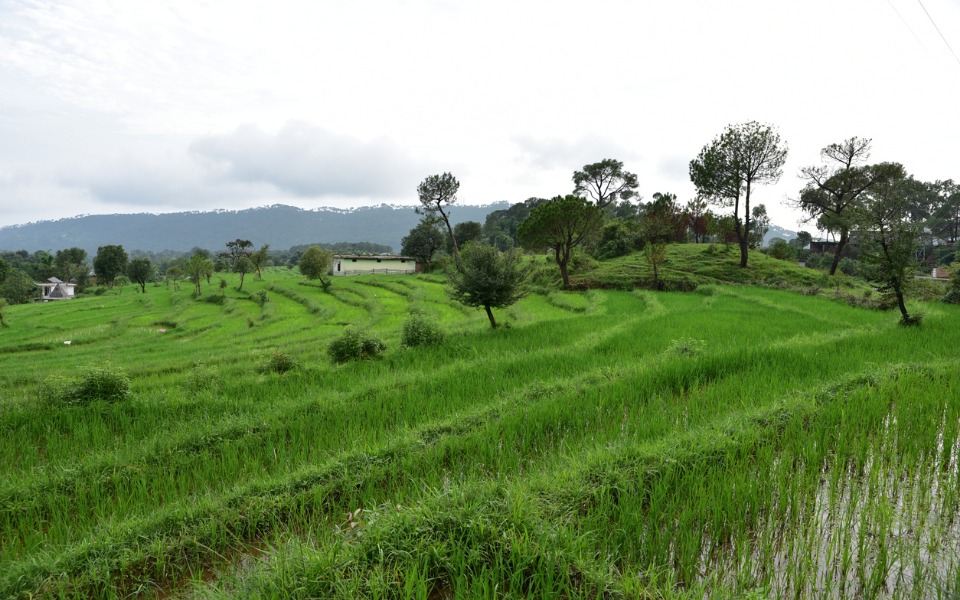
Moong, urad, cotton acreage may go down as rain break puts farmers in a fix
A longer than expected interruption in monsoon has affected sowing operations badly with just 45 per cent of the total kharif area of about 1,000-1,100 lakh hectare (ha) covered till July 9, as per the Ministry of Agriculture.

A longer than expected interruption in monsoon has affected sowing operations badly with just 45 per cent of the total kharif area of about 1,000-1,100 lakh hectare (ha) covered till July 9, as per the Ministry of Agriculture.
While crops like paddy still have a sowing window open, those growing moong, urad and cotton may be running out of time as rains test their patience. The good news though is monsoon revival is on cards. The India Meteorological Department (IMD) forecast shows southwest monsoon between June 1 and July 7 was below normal, but would revive from this week onwards and cover the entire country after July 10.
The Union Agriculture Ministry is optimistic about sowing picking up pace soon as “at present there is no point of concern for achieving the normal (monsoon) area coverage in the country.”
Sowing so far…
Till July 9, kharif sowing is 10.43 per cent deficit at 499.87 lakh hectare. Last year, this time, 558.11 lakh ha land was under different crops. The total coverage at the end of the 2020-21 kharif season was 1,121.75 lakh ha.
As per official data, paddy sown area is down at 114.82 lakh ha so far in the 2021-22 kharif season as against 126.08 lakh ha in the year-ago period.
Less coverage of paddy was reported from Bihar (2.74 lakh ha), followed by Chhattisgarh (2.18 lakh ha), Assam (1.37 lakh ha), Haryana (1.31 lakh ha), West Bengal (0.91 lakh ha), Andhra Pradesh (0.80 lakh ha), Manipur (0.74 lakh ha), and Odisha (0.66 lakh ha).
Similarly, area under pulses remained lower marginally at 52.49 lakh ha from 53.35 lakh ha in the year-ago period.
Sowing of coarse cereals was down at 73.07 lakh ha as against 88.21 lakh ha, while area sown to oilseeds remained lower at 112.55 lakh ha as against 126.13 lakh ha in the said period.
Among cash crops, area sown to cotton was lower at 86.45 lakh ha so far this kharif season as against 104.83 lakh ha in the year-ago period.
Monsoon wait for #Delhi will get over soon. More prominently it will rain on 11th, 12th, 13th July and even later. #monsoon #Monsoon2021 #WeatherForecasthttps://t.co/Vn4v3CTuHW
— Skymet (@SkymetWeather) July 10, 2021
Soyabean area is down to 82.14 lakh hectare from 92.36 lakh hectare last year.
Sugarcane was the only exception with a marginal rise in cultivated area at 53.56 lakh ha as against 52.65 lakh ha in the said period last year.
Some areas got more rain, some got less
Ironically, sowing has got affected in different parts of the country either due to excess or deficit rains. Sowing in Maharashtra, Gujarat, Rajasthan, Haryana and Punjab has been lower due to uncertain and less rainfall. On the other hand, excess soil moisture is affected sowing in Southern Peninsula, Bihar and Jharkhand.
Also read: North-west India reels under heat wave; hottest July in last 9 years
In areas of deficit rains, farmers are opting for short-duration crops or waiting endlessly for it to rain enough so that they can start sowing. Farmers usually avoid sowing groundnut, moong and urad if it doesn’t rain enough by the mid of July. Cotton growers will abandon the idea of sowing it it doesn’t rain enough by the end of July.
Monsoon progress
According to Skymet Weather Services, in the next 5 days, widespread rain with isolated heavy falls is likely over Central India, which includes Madhya Pradesh, Vidarbha, Chhattisgarh and Odisha. Moderate rains are expected over West Madhya Pradesh from July 10 and in East Madhya Pradesh from July 9. Between July 9 and 12, heavy to very heavy rainfall is very likely over Maharashtra and Goa, Coastal Andhra Pradesh, Telangana, Karnataka and Kerala.
The northeast parts of India which include Arunachal Pradesh, Assam, Meghalaya, Nagaland, Manipur, Mizoram and Tripura will see southwest monsoon winds weakening. Uttar Pradesh, Bihar, Madhya Pradesh and Chhattisgarh will face thunderstorms along with lightning in the next 24 hours, said a Skymet report.
Monsoon rains are very critical for India’s agriculture sector with more than 60% farm land depending on the four-month monsoon for survival.
(With inputs from agencies)


